This week’s postcard is a lovely tinted image of a pair of Corporal Majors of the 1st Life Guards: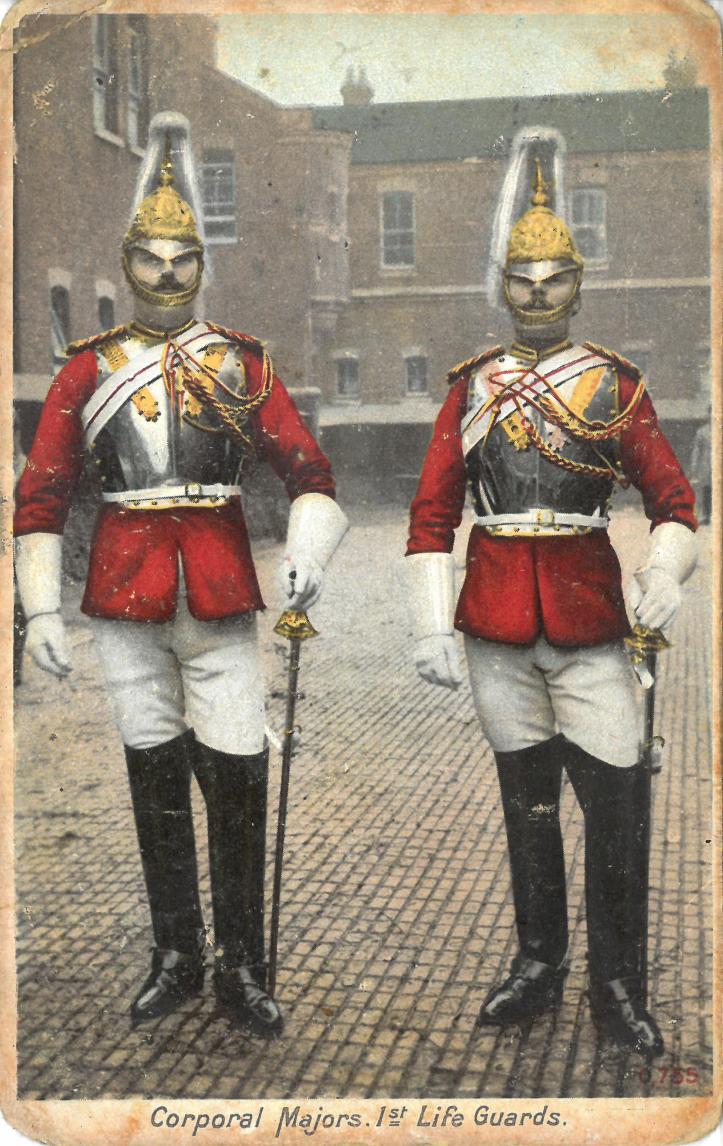 Happily this card was posted, meaning we can date it easily, the post mark on the back indicating it was sent in September 1907:
Happily this card was posted, meaning we can date it easily, the post mark on the back indicating it was sent in September 1907: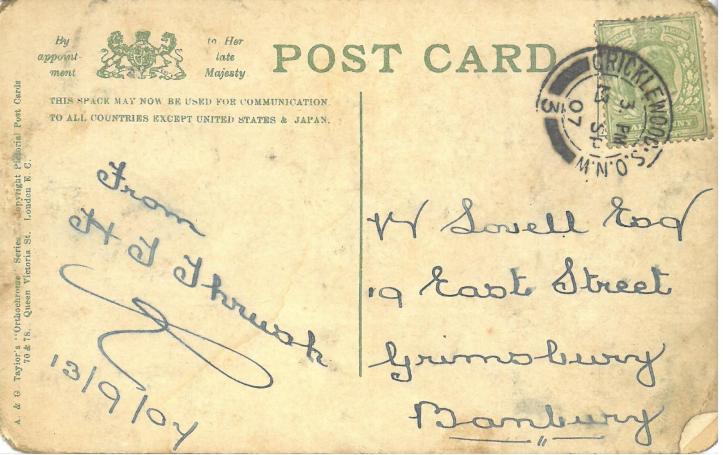 The Life Guards are photographed in their ceremonial dress, with polished breastplates over red tunics:
The Life Guards are photographed in their ceremonial dress, with polished breastplates over red tunics: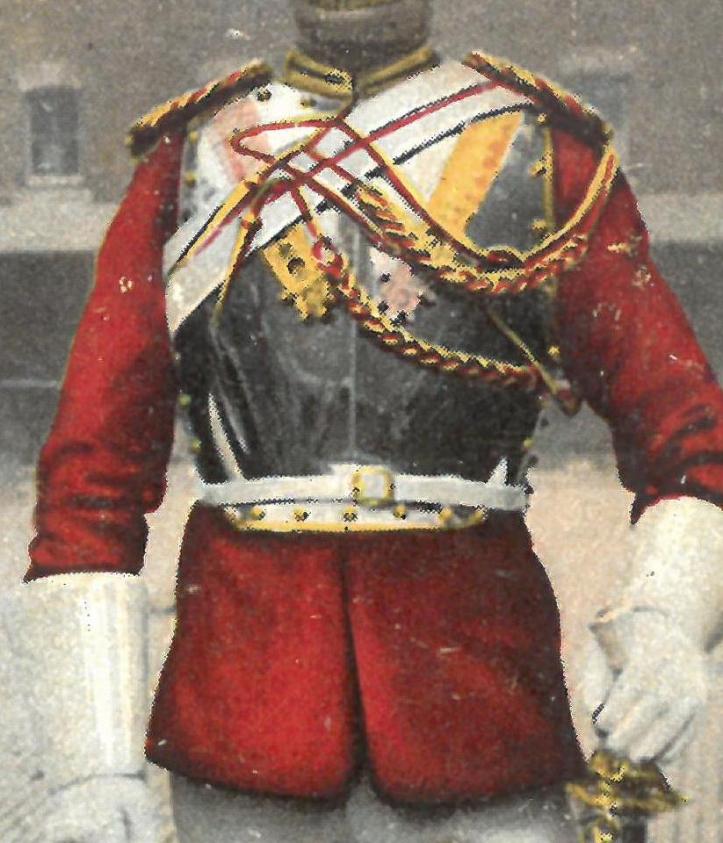 Plumed helmets:
Plumed helmets: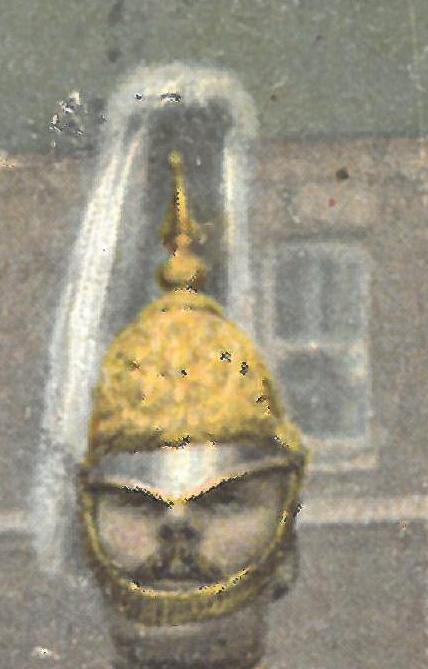 White breeches and high black leather boots:
White breeches and high black leather boots: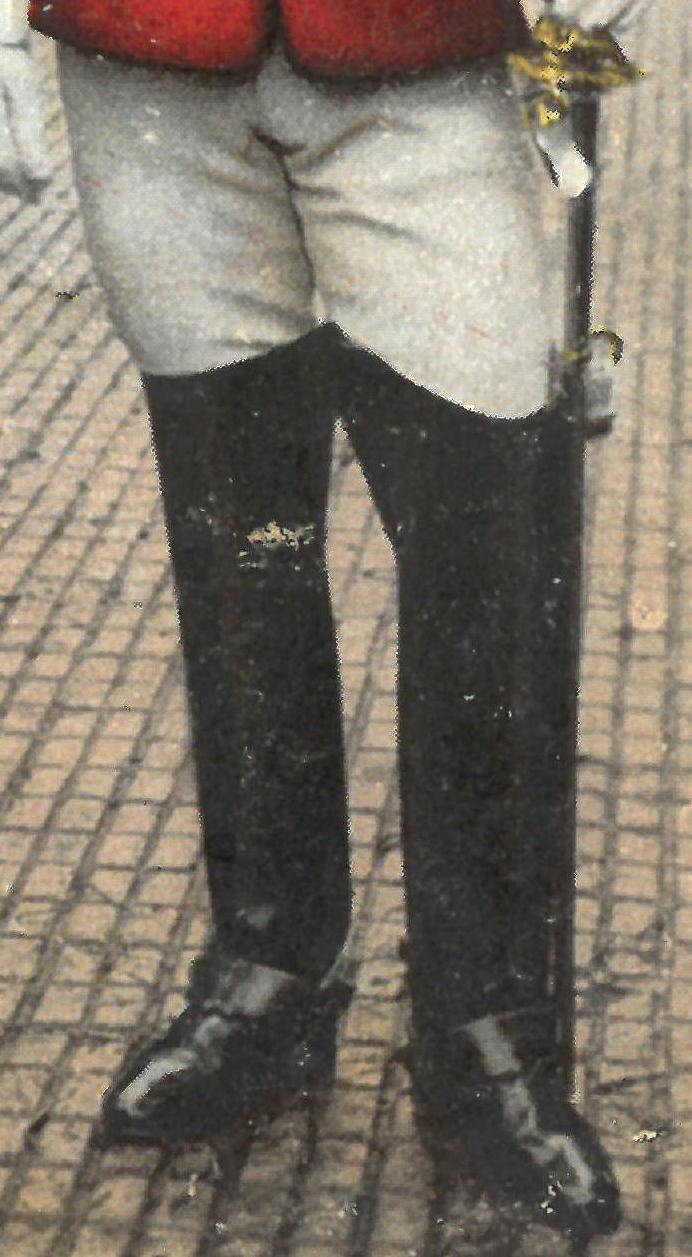 And carrying swords:
And carrying swords: The rank of Corporal Major is unique to the Household Cavalry and is equivalent to a warrant officer rank. The ranks in the household cavalry are as follows:
The rank of Corporal Major is unique to the Household Cavalry and is equivalent to a warrant officer rank. The ranks in the household cavalry are as follows: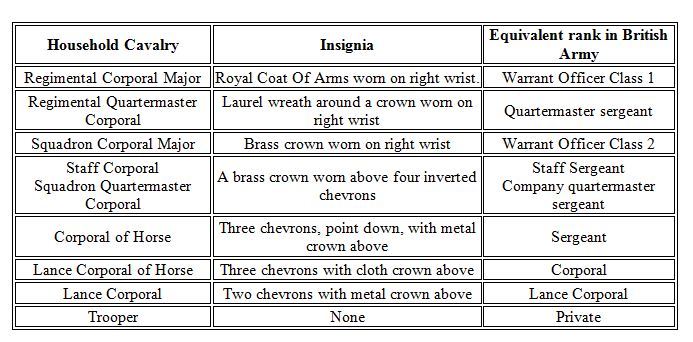 Non commissioned officers in the Household Cavalry do not wear badges of rank when in ceremonial dress, instead wearing a series of aiguellettes to indicate their rank:
Non commissioned officers in the Household Cavalry do not wear badges of rank when in ceremonial dress, instead wearing a series of aiguellettes to indicate their rank: Very soon these elaborate dress uniforms were to be packed away as the regiment became one of the first to be sent to France at the outbreak of World War One, here we see the men in rather more sombre attire at Hyde Park Barracks as they prepare to leave:
Very soon these elaborate dress uniforms were to be packed away as the regiment became one of the first to be sent to France at the outbreak of World War One, here we see the men in rather more sombre attire at Hyde Park Barracks as they prepare to leave: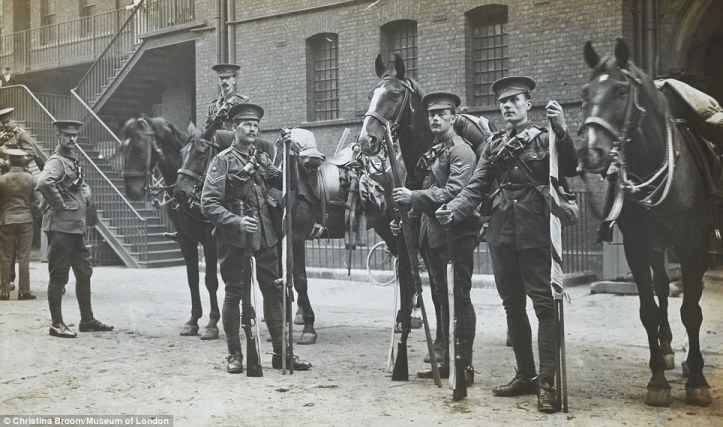 Soon after the declaration of war, one of the squadrons was detached to help form the Household Cavalry Composite Regiment, which moved to France with 4th Cavalry Brigade and saw action at Mons and in the subsequent withdrawal to and beyond the Marne, the decisive battle of the Marne, and later at Ypres. The Composite Regiment was broken up on 11 November 1914, and the squadron rejoined the regiment, which was by now itself on the Western Front.
Soon after the declaration of war, one of the squadrons was detached to help form the Household Cavalry Composite Regiment, which moved to France with 4th Cavalry Brigade and saw action at Mons and in the subsequent withdrawal to and beyond the Marne, the decisive battle of the Marne, and later at Ypres. The Composite Regiment was broken up on 11 November 1914, and the squadron rejoined the regiment, which was by now itself on the Western Front.
The main body crossed to Belgium, landing on 8 October 1914. Other than in the first two weeks when it was used in the traditional cavalry, for mobile reconnaissance, it fought most of the war as a dismounted force.
The regiment was heavily involved at the First Battle of Ypres (October – November 1914); Second Ypres (April-May 1915); Loos (September-October 1915) and Arras (April 1917). At other times, it took its turn in holding various sections of the front line trenches, and at other times prepared to exploit breakthroughs in battle, but opportunities rarely presented themselves.
Fascinating!